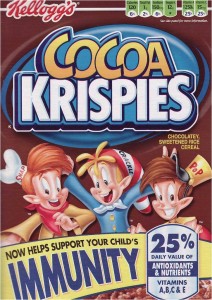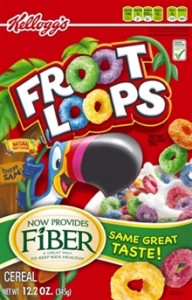San Francisco takes on Cocoa Krispies!
Now that the Smart Choices program is on hold, it’s time to take a look at what else is on food packages these days. My current favorite example is the huge IMMUNITY banner across Kellogg’s Cocoa Krispies.
 I don’t know how you interpret this but my mind boggles at the very idea that eating Cocoa Krispies might protect kids against swine flu.
I don’t know how you interpret this but my mind boggles at the very idea that eating Cocoa Krispies might protect kids against swine flu.
Apparently, the minds of the San Francisco attorney general’s staff are equally boggled. They just sent a warning letter to Kellog:
“Specifically, the Immunity Claims may falsely suggest to parents that cereals like Cocoa Krispies are more healthy for their children than other breakfast foods that are not high in sugar and not highly processed. The Immunity Claims may also mislead parents into believing that serving this sugary cereal will actually boost their child’s immunity, leaving parents less likely to take more productive steps to protect their children’s health.”
The city attorneys are asking Kellogg to provide copies of all of the consumer and scientific research the company used to establish this claim, or else. If they don’t get these documents, they will “seek an immediate termination or modification of the advertising claim….”
Good idea. I can’t wait to see how Kellogg’s – ever at the leading edge of advertising claims – will respond.
But wait! Shouldn’t the FDA be taking this on?




